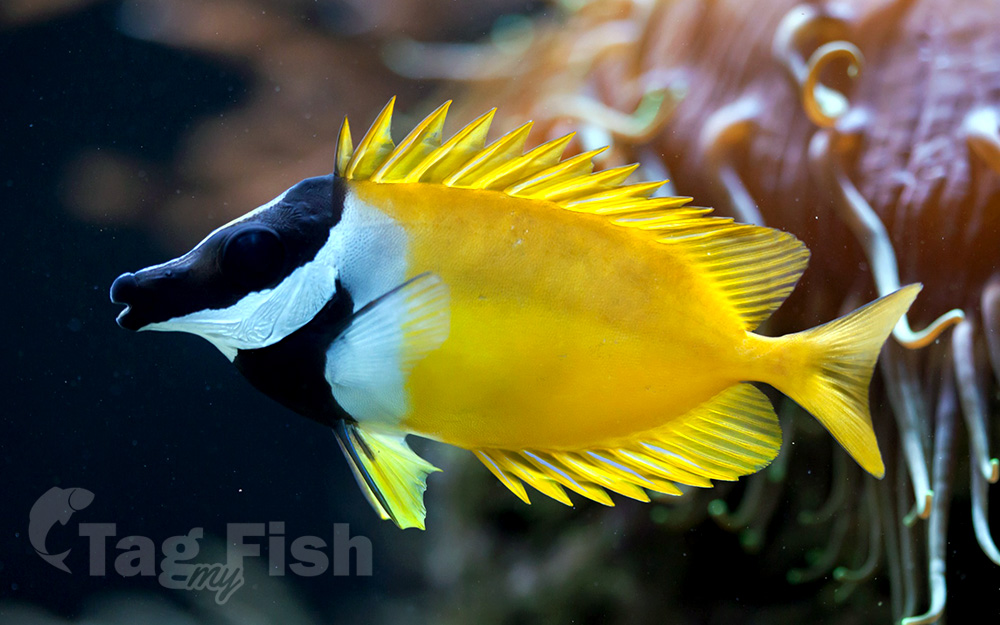Foxface rabbitfish
(Siganus vulpinus)

Classification
General data
The foxface rabbitfish has a compressed body which has a depth which fits into its standard length 1.9 to 2.4 times. The dorsal profile of the head is steep to the rear of the eye and there is an indentation between the eyes and a tubular snout. The caudal fin is weakly forked. There is a procumbent spine in the nape to the front of the dorsal fin.
Like all rabbitfishes, the dorsal fin has 13 spines and 10 soft rays while the anal fin has 7 spines and 9 soft rays. The fin spines hold venom glands.
This species attains a maximum total length of 25 cm (9.8 in), although 20 cm (7.9 in) is more typical.
The main colour on this rabbitfish is vivid yellow with white on the head and front part of the body, however foxfaces can camouflage when experiencing threat, quickly changing colour to a dark brown. There is a black band running backwards from the mouth through the eye to the start of the dorsal fin and there is a black area on the breast that runs upwards to just above the base of the pectoral-fin, tapering as it does so.
The foxface rabbitfish occurs in the far eastern Indian Ocean and in the western Pacific from Indonesia to the Marshall and Gilbert Islands north as far as Taiwan and south to New Caledonia and Australia.
In Australia it is found from Western Australia on the northern reefs and offshore reefs, at Ashmore Reef in the Timor Sea, and on the east coast in Queensland from the northern Great Barrier Reef to the Capricorn Islands. It has been recorded as deep as 30 m (98 ft). This species lives in lagoons and seaward reefs where there is a rich growth of corals.










